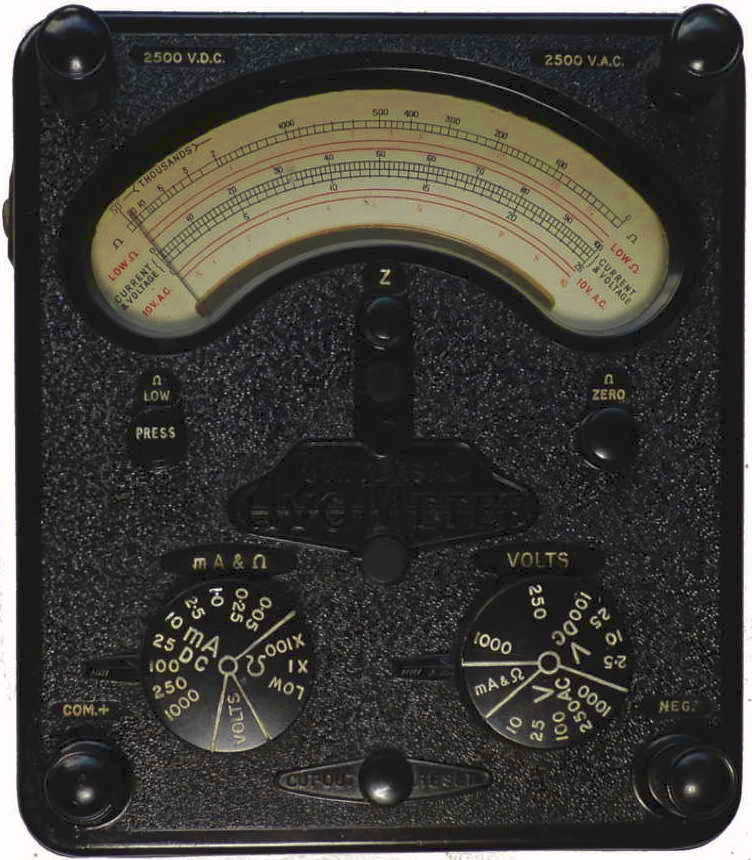
High Resistance AVO universal multimeter (model1)
s/n 1226-A-150 working
serial
number 1226-A-150
The High Resistance AVO universal multimeter was a significant development of the range of AVO multimeters which started life back in 1923, and many of the original features remained almost unaltered right through to the meter shown here. The firm also produced a range of smaller multimeters, the AVO Minor and later the AVO Multiminor as well as a number of special instruments such as the Heavy Duty model. Production of the iconic model 8 meter ceased in 2008. Though known for their Avometer general purpose multimeters, they made a wide range of test gear including valve testers, oscillators and light meters. You will find more information here about these instruments and other similar models. AVO also produced a range of smaller multimeters which are described here.

s/n 1226-A-150 working
This is the first 20,000 ohms per volt AVO multimeter, it preceded
the the more versatile
model 8 which was renowned for its reliability, robustness and the
incorporation of a mechanically operated cut out linked to the meter
movement. The two switch range selection system has endeared the
latter to generations of radio and television engineers. But unlike the
later model 8 has no transformer or AC current ranges. The higher
sensitivity movement enabled High-voltage terminals to be added. Also
unlike
the Model 7 and Model 40 there is no Q knob or 'divide by 2' button but
there is a low
resistance range (0-20 ohms full scale) which is activated by
pushbutton. This is one of two versions
sometimes called High
Sensitivity models
introduced in 1948 [a screened panclimatic variation was also made] and
are updated
versions of the model 7 designed to be more suited to radio and
television servicing. It is housed in an Bakelite
case similar to the previous models but equipped to to take one 4.5
Volt battery and one 1.5 Volt cell. The battery compartment for the
latter will take two such batteries AVO suggests that one is a spare,
if you only have one some form of packing will be needed to keep the
the battery in position.
You will note that this instrument has a Low Ohms range which is is
scaled upwards from left to right unlike the other two more
conventional ranges. Rather than using the meter movement to measure
the current through the unknown resistance it is connected so as to
measure the voltage across the unknown resistance.
When I acquired this meter in 2015 it had a missing battery cover, a
bent pointer, two open circuit resistors and two fried ones. Initially
I found it worked fine on DC current and voltage, Low and X100
resistance ranges and the AC ranges. The bobbin resistor in series with
the 4.5 Volt battery was open circuit but fortunately marked with its
resistance value (47.5k) so I could replace it with a selected 47k
resistor. This meter would have had a Bakelite battery cover with slots
for probes so I have taken a suitable one from a Model 7 meter and made
an aluminium replacement for the latter.
By trial and error I got the X1 resistance range working by shunting
the burnt out wire wound resistor with 330 ohms but it read about 10%
high. I was fortunate in being sent a circuit diagram from PM Munro and
this prompted
me to check the fried resistor which was not open circuit only to find
that it had shorted turns. Touching it caused it to rise to its correct
value. A coating of shellac varnish hopefully cured that and the
addition of selected 330 and 33 ohm resistors in series gave the
requisite 353 ohms. After straightening the pointer and reassembling
the meter works as intended and is surprisingly accurate.
The resistors mentioned are those connected between the three left hand
tags on the lower component board. Only after re-assembling the meter
did I notice "V.T.Ltd" in the corner of the scale plate. Does this mean
that the meter was outsourced and if so by whom or was it specifically
made for a particular firm? Now cleaned and given the AVO recommended
application of light machine oil it looks much happier though the red
scale markings have faded over the years.
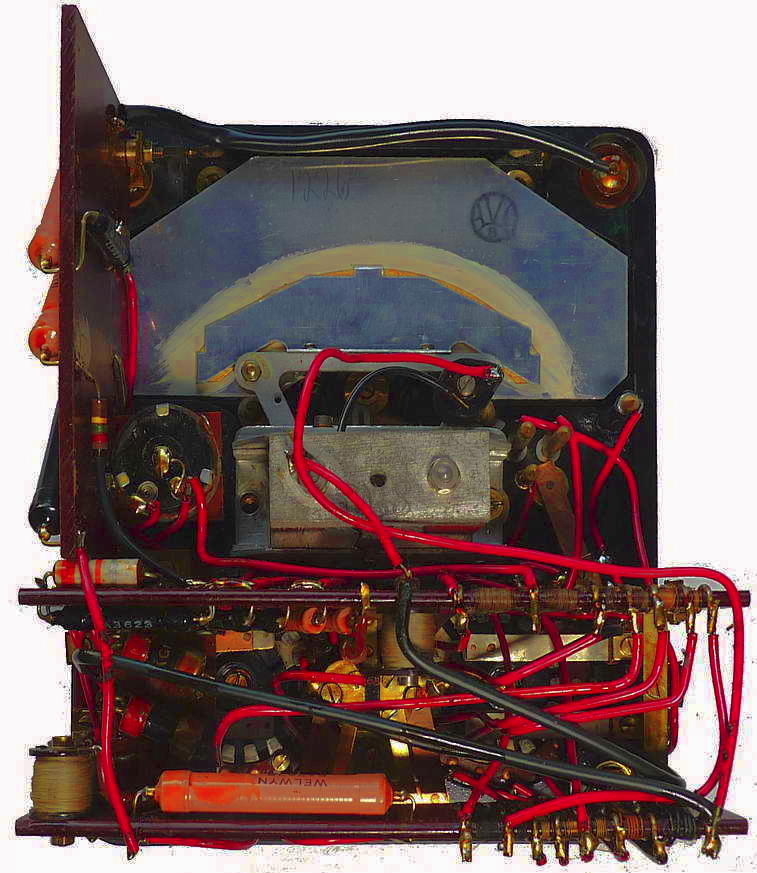
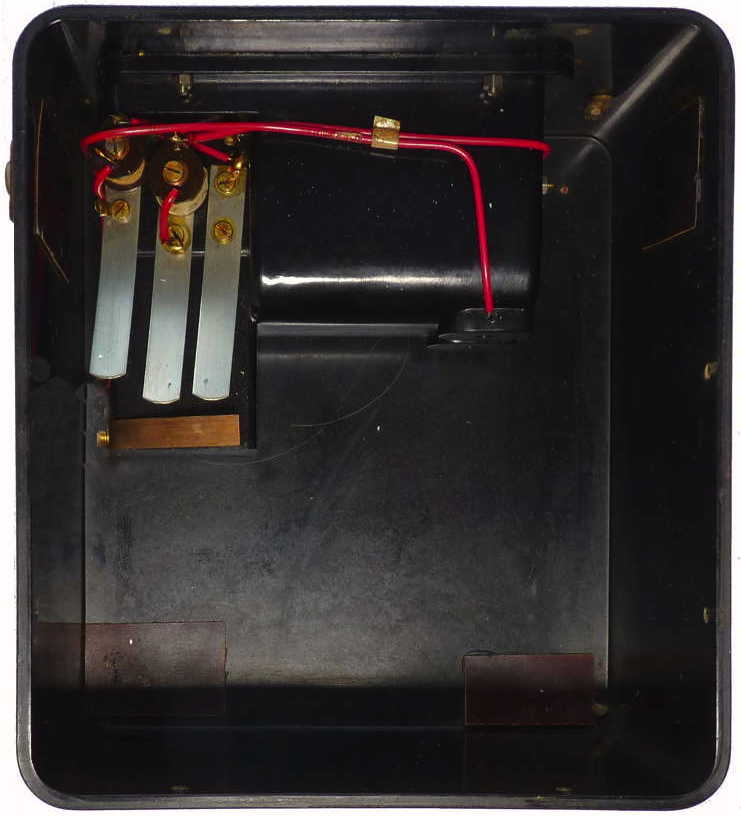
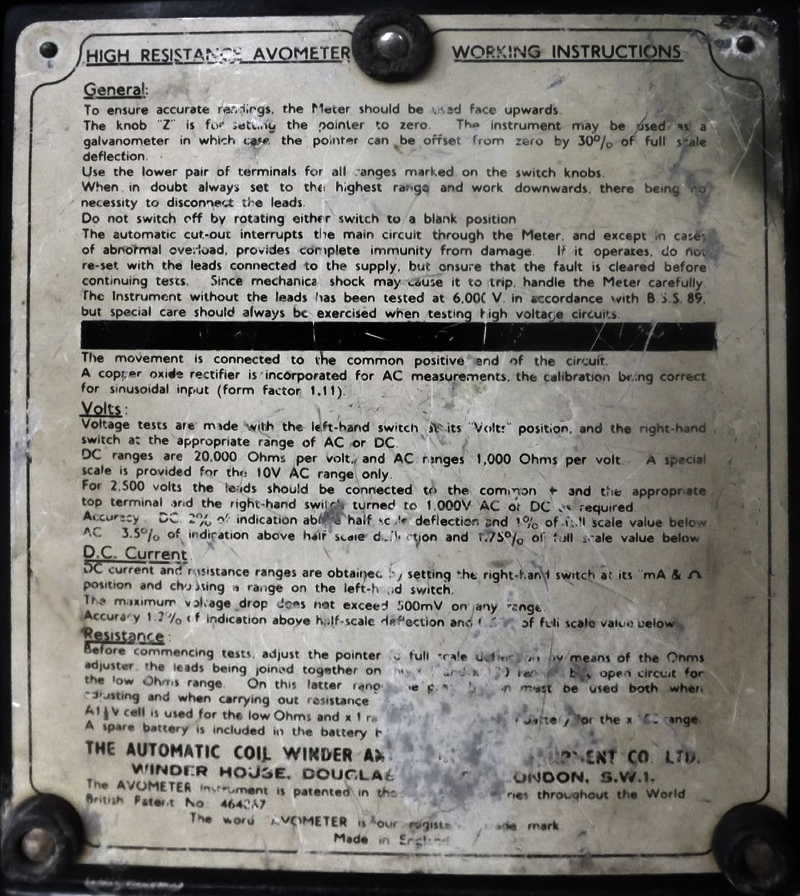
The text that is blacked out reads
as follows on the panclimatic model which is housed in a screened
casing.
"The instrument as a whole is magnetically screened in a metal case,
this is not being connected electrically to the circuit"

A early advertisement referring only to the model 1
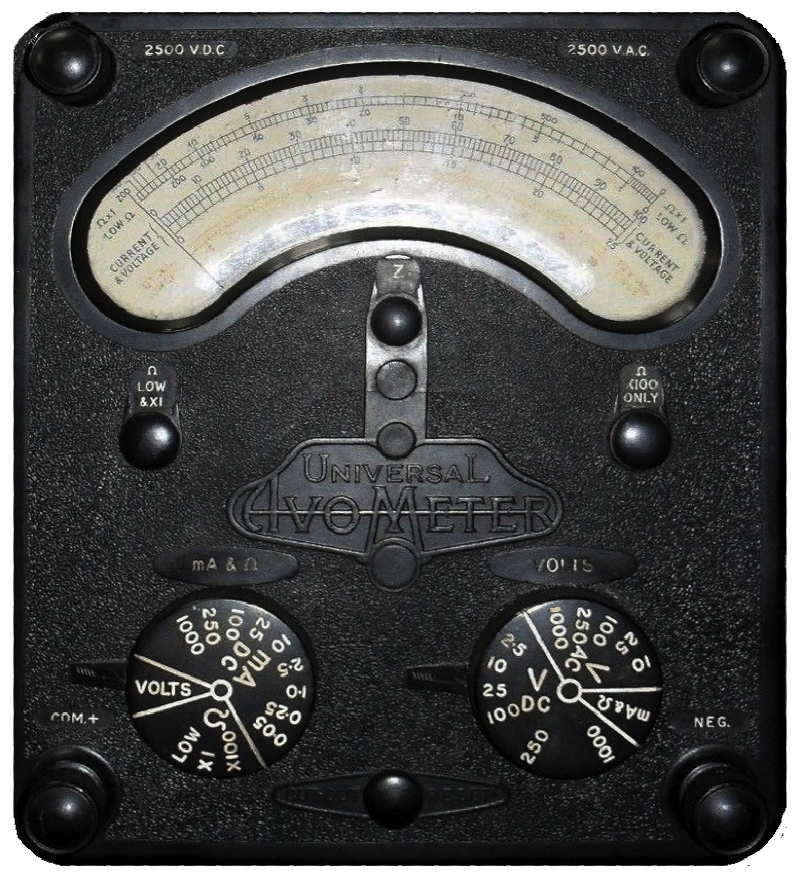
note scale difference and button labels (not in my collection)
Batteries A 1.5 volt cell with a brass terminal and a flying lead for the negative connection and for the highest resistance range a single 4.5 volt cycle lamp battery with brass spring connectors was used which is still available. The 1.5 volt cell can be replaced with a single cell size D to with soldered connections.
How old is it? Most AVO meters can be dated from the last 3
or 4
digits of the serial number under the right hand end of the scale.
These define the month and year of manufacture. For example this one
was made in January 1950
What is it worth? I purchased this one together with a model
7 Mk2 for £35 in 2015. They were only made for a couple of years so
fairly unusual, so I guessing £40 or more.
What is the difference between this model and a model 2? The model 2 measures resistance up to 20 Megohms rather the 5 Megohms of the model 1.
For further information have a look at my pages on the model 8
AVO and Test Meter No1 here and here and the general page covering a
whole range of AVO meters is here

